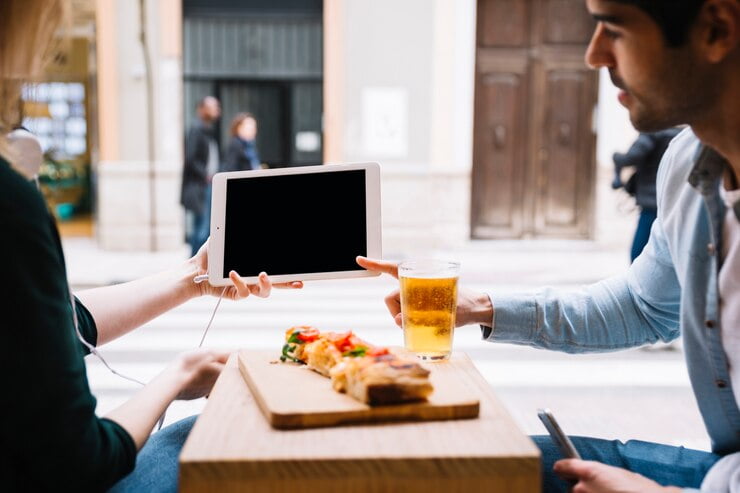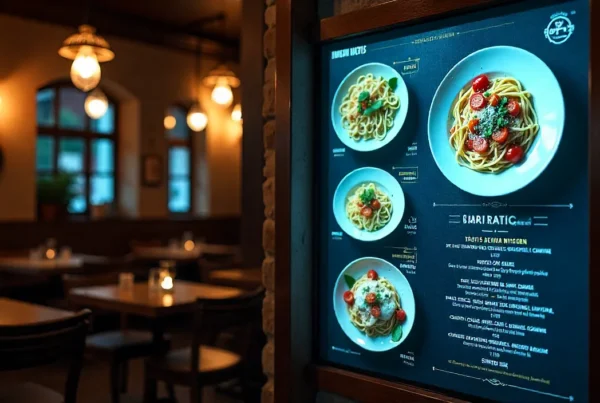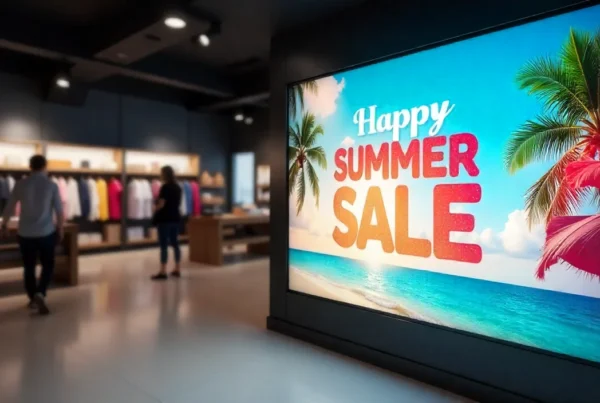We have reached the digital food menu age, changing everything from a food truck digital menu board to complex fast food digital menu boards in large chain restaurants. A dynamic digital menu board is an alternative to unchanging paper menus, as it uses vivid screens that can change prices, display high-definition videos of dishes, and even add digital menu labels to indicate allergens. With digital menu software, companies in the industry are increasing customer engagement, optimizing operations, and increasing sales by using the power of cloud-based technology.
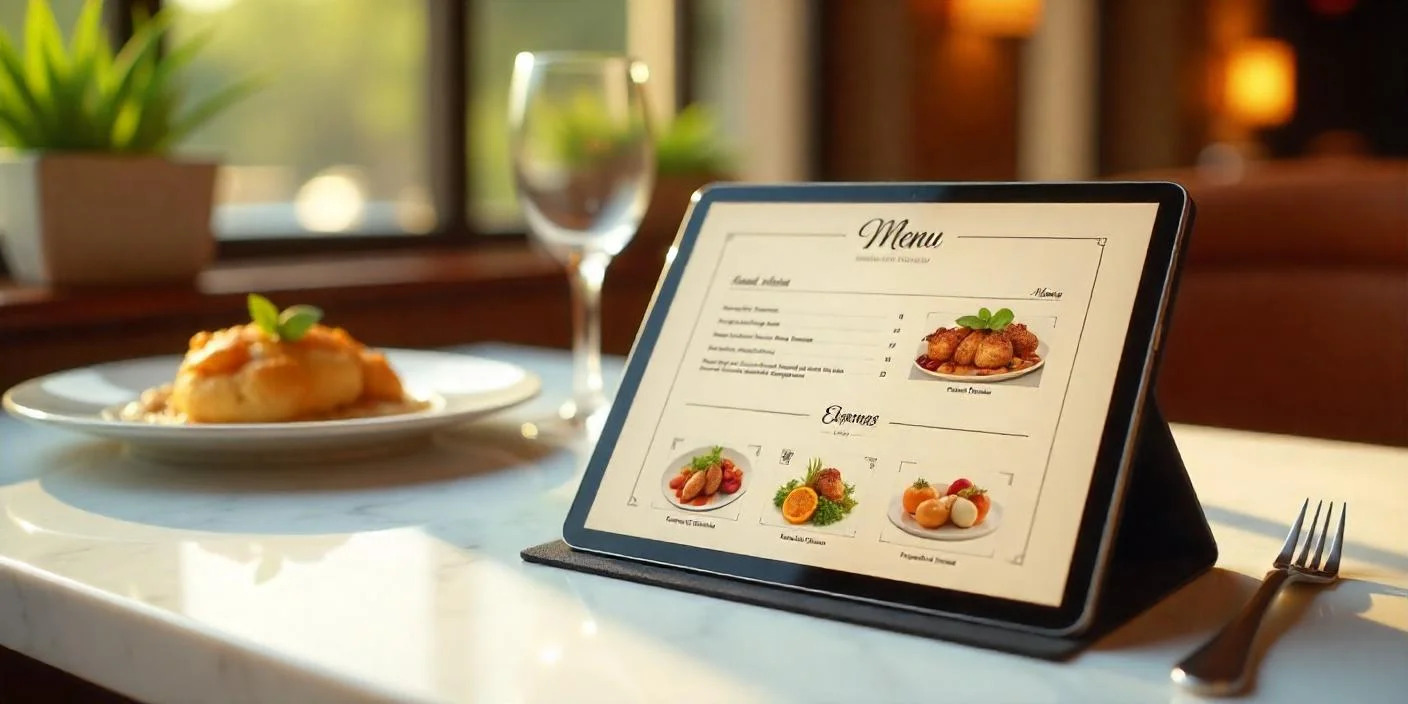
What Is a Digital Food Menu?
A digital menu is a computerized display menu that serves to replace printed or chalkboard menus. These displays, whether they are outside digital menu boards of food trucks or indoors in fast-casual restaurants, provide updates in real-time, interactivity capabilities, and the ability to integrate multimedia. A typical digital menu design is completed with high-resolution photos of foods, call-to-action graphics that move, and even nutrition panels. Typical digital menu board formats are food truck digital boards, digital menu boards for fast food restaurants, and large digital food group menus in a multi-vendor food court.
Why Businesses Are Switching to a Digital Menu
Dynamic Pricing & Real-Time Updates
Using a digital menu board, you can change prices in real-time as required by the demand or cost of ingredients or promotions, with no more reprints or handwriting additions. No more chalkboard lists that have to be updated by hand; food trucks and quick-service kitchens can now have digital menu boards that can be updated with the push of a button.
Enhanced Visual Appeal
An effective menu design incorporates large fonts, salivating pictures, and even bite-sized video clips to render the food impossible to resist. Research reveals that the conversion to fast food digital menu boards can improve sales by a maximum of 30 percent compared to static menus because customers react to entertaining content.
Improved Operational Efficiency
Contemporary digital signage food menu systems are compatible with POS and kitchen display (KDS) software, automating the entry of the order and minimizing the number of errors. Digital menu labels are updated based on inventory, and once a food item is sold out, it will automatically disappear on the screen, which optimizes the workflow of staff and keeps the customer updated.
Better Customer Engagement
Digital food group menu kiosks allow guests to filter on a dietary need, such as vegan, gluten-free, or nut-free, and experiment with customization before placing an order. This helps cut down on decision fatigue and allows the guests to create their dream meals.
Long-Run Cost Savings
Although the cost of the initial investment in a digital menu board may be more than printed materials, savings over time accumulate fast. The absence of recurring printing costs, the minimization of work on manual updates, and the increased upsell all add to a better bottom line.
Key Features of an Effective Digital Menu
High-Resolution Display
Outdoor installations (such as outdoor menu boards for food trucks) need weatherproof, anti-glare screens with 1,500+ nits of brightness to be readable in direct sunlight. Digital menu boards for fast food restaurants have clear HD or 4K screens that bring out the contents of the menu.
Easy-to-Use Digital Menu Software
Seek out the solutions that provide drag-and-drop digital menu template customization, scheduled promotions (a la happy hour mashups), and KDS integration. Managers can design, preview, and implement new layouts without coding through intuitive platforms such as Nento.
Cloud-Based Management
Chain-operating food trucks and multi-location stores need to have remote updates to their digital menu boards. Hosting the CMS in the cloud will allow you to adjust prices, change images, or initiate a flash promotion at home, in a cafe, on your laptop, tablet, or even smartphone.
Eye-Catching Digital Menu Design
Embrace best practices such as large headlines on item names, attractive food images, and call-to-action buttons (i.e., Try Our New Vegan Burrito!). The harmonious color scheme and font hierarchy help move customers around the store and make their choices easier.
Outdoor durability
In the case of mobile businesses, the best food truck digital menu board screen should be waterproof, resistant to temperature, and able to resist rain or dust. The tough enclosures and impact-resistant glass keep your digital board working in any weather.
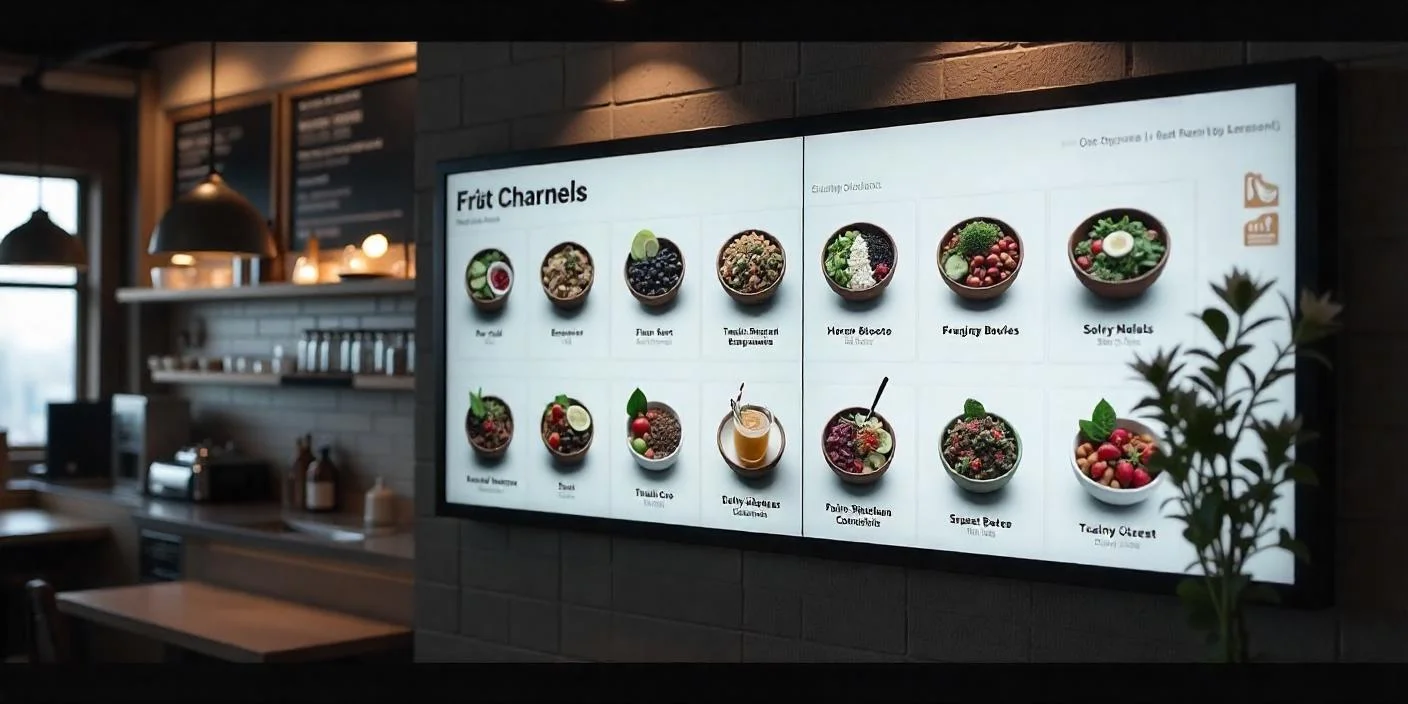
Industries Benefiting from a Digital Menu
Food Trucks & Outdoor Vendors
A food truck digital menu board is eye-catching because it has colorful, scrolling content and simple seasonal specials that can be updated. In a matter of seconds, operators can replace summer lemonade offers or winter chili offers.
Fast Food Restaurants and Quick-Service Restaurants
A digital board system in a fast food restaurant setting can decrease perceived waiting times and increase average tickets by using interesting graphics and combo meal animations. Even menu changes, such as the introduction of limited-time burgers and breakfast items, go smoothly to all locations.
Cafes and Coffee Shops
Cafes use digital menu labels to showcase daily specials, loyalty rewards, or the current inventory (e.g., “Your last chance to have almond croissants as we only have 3 left!”) to give them a sense of urgency and individualism.
Corporate Food courts and Cafeterias
Multi-tenant locations are displaying a digital food group menu display, which shows each vendor displayed next to each other. Each vendor has custom branding, nutritional information, and allergen warnings to help guests navigate various options.
Choosing the Right Digital Menu Software
In choosing the digital menu software, consider the following first:
- User-Friendly: Drag-and-drop editors and templates of digital menus.
- Integration: POS, KDS, and inventory compatibility.
- Analytics: It would offer in-store reporting of item popularity and dwell times.
- Scalability: It should also support a single food truck and go up to multi-location chains.
Among the most popular ones are Nento, Yodeck, NoviSign, and Zenput, which have their own combinations of capabilities, ranging between basic content scheduling and complex interactive modules.
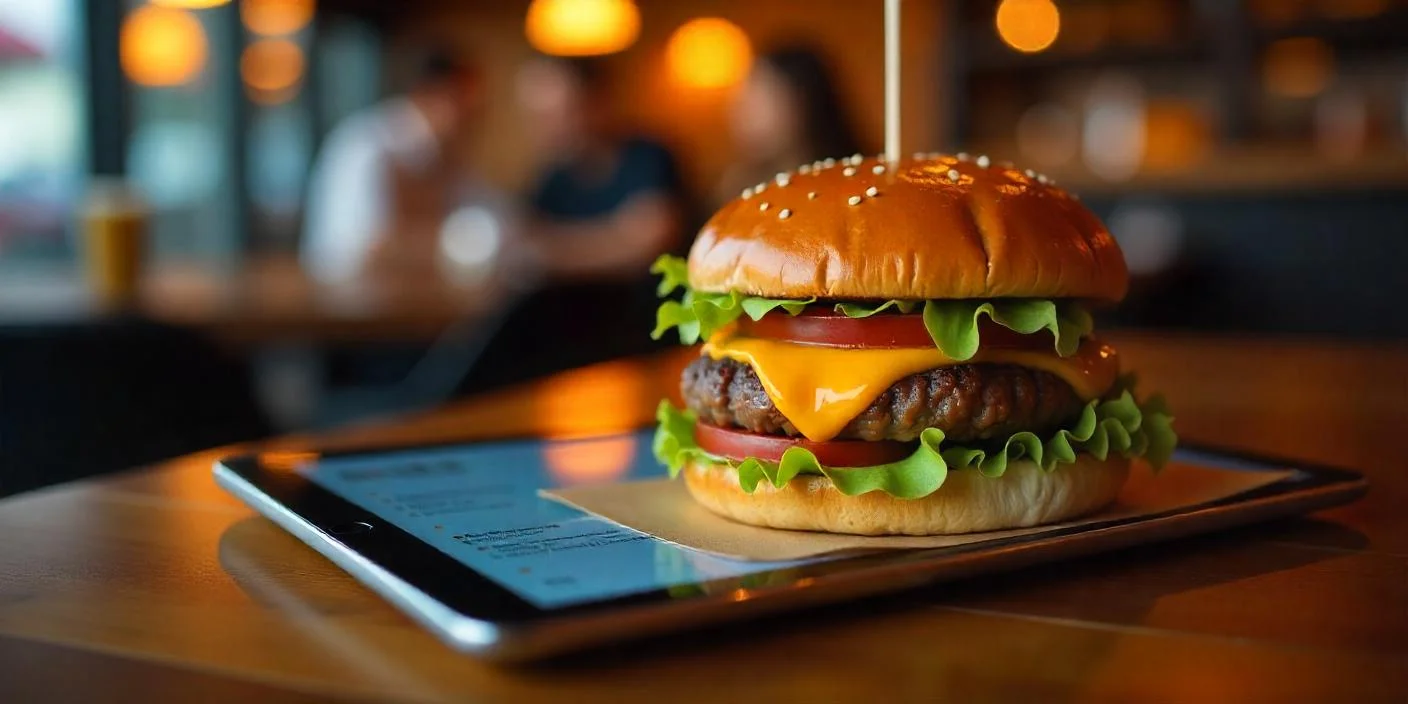
Serve Up Success with a Digital Menu
The digital menu revolution is transforming food service—from small-scale food truck digital menu board systems to large-scale digital menu board fast food restaurants. With the help of digital menu design that attracts attention and eye level, cloud-based restaurant management, and POS/KDS workflow integration, any business can improve the guest experience, manage operations, and increase revenue. Prepared to be modernized? Find digital menu software and see your sales and customer satisfaction skyrocket!
FAQs
How much does a digital menu board cost?
Commercial displays are priced between 500 and 5000+ dollars, depending on size, brightness, and interactivity.
Can I use a consumer TV for my digital menu?
Although feasible, consumer TVs are not nearly as durable nor as bright as dedicated digital boards for food trucks or outdoor fast-food displays.
How do I update my digital menu?
The majority of digital menu software provides cloud updating that can be done through any web browser or mobile app, and no on-site technician is necessary.
Are digital menu boards energy-efficient?
New LED-backlit displays use much less electricity than the previous fluorescent-backlit displays, which saves the cost of operation.
Can a digital menu boost sales?
Yes, moving images, offers, and upselling reminders can augment impulse buying by 20-30 percent.
What’s the best screen for outdoor menu boards?
To have an outdoor digital menu board on food trucks, select a 1,500+ nit, IP65 display to make it visible and weatherproof.
Do I need Wi-Fi to run a digital menu?
Cloud-based systems need the internet to be updated, and most platforms will store it locally so that the playback does not stop during the outage.

